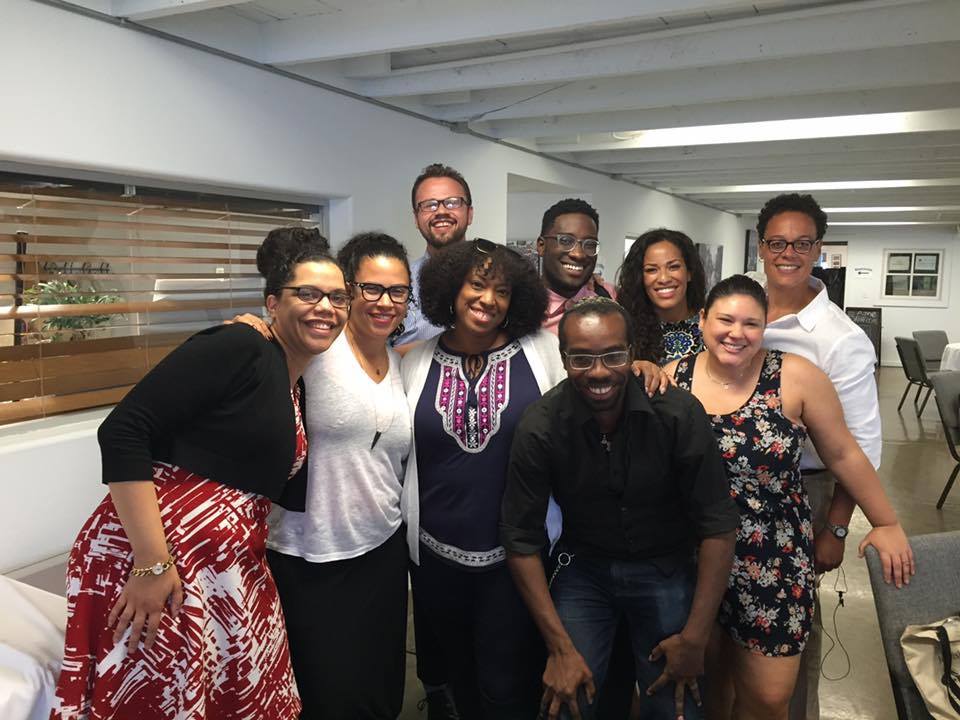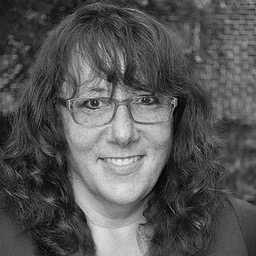 Group photo of the Jews of Color Field Building Initiative. Photo from Facebook.
Group photo of the Jews of Color Field Building Initiative. Photo from Facebook. I live in as diverse a Jewish community as there may be in America, in Brooklyn, N.Y., but often look around synagogue sanctuaries and other gathering spaces and wonder why there aren’t more black and brown Jews present.
Yehuda Webster’s experience tells us why. One Monday morning last November, Webster, who is African American and Jewish, was returning a sefer Torah he’d rented for a bar mitzvah where he officiated.
Webster — who lives in Brooklyn’s Crown Heights neighborhood, studied at the Jewish Theological Seminary and in Israel, and ran a b’nai mitzvah tutoring company — carried the holy scroll toward his Lyft. A Chasidic man challenged where he was going. Webster ignored him. Within moments, another Chasid began pestering him. “I defensively told them I owed no explanation and their continued demands and harassment were racist,” Webster wrote on his Facebook page.
He got into his vehicle but another car, driven by a Chasid, blocked it. Twenty or 30 Chasidim quickly circled. Police eventually dispersed the crowd. “It was one of the most racist and terrifying moments of my life,” Webster wrote.
In response, Webster doubled down on the Jewish community. He started JOC Torah Academy, a space where Jews of color (JOCs) learn from other JOCs.
Most JOCs, however, walk away when they experience racism, said Ilana Kaufman, who directs the Jews of Color Field Building Initiative. “Racism pushes Jews of color away and we seek our refuge elsewhere,” she said. We spoke just before her initiative released a first-ever analysis of Jewish population studies, titled “Counting Inconsistencies: Analysis of American Jewish Population Studies with a Focus on Jews of Color.”
It found that a million Jews of color are missing from counts of America’s Jewish community.
“Racism pushes Jews of color away and we seek our refuge elsewhere.”
— Ilana Kaufman
The meta-study was directed by Stanford University’s Ari Kelman, who analyzed seven national Jewish population studies, 15 local and community studies and four student studies. Some studies didn’t ask about race, others did inconsistently and used sampling techniques resulting in undercounting of JOCs, like relying on “Jewish” names.
“My friend Lee Smith would not get called, while Whoopi Goldberg, who isn’t Jewish, would,” Kaufman noted. “Jewish demographic tools don’t have any capacity to count Jews of color in a household,” she said. “It’s as if non-white Jews simply don’t exist.”
In ways small and large, white Jews communicate to JOCs that they don’t belong. Today JOCs represent 12 to 15% of the American Jewish population. The Jewish community, like America in general, becomes browner with each generation. By 2042, over half of Americans will be multiracial or people of color, Kaufman said, and it will be no different among American Jews.
Raised with her twin brother, David, by their white Jewish mother in San Francisco (their African American father wasn’t involved), Kaufman felt caught between two worlds starting as a preteen. At Jewish camp, she felt unable to bond with the other Jewish girls over hair and clothes, she said.
After 20 years as a teacher and administrator, Kaufman, 47, worked at the San Francisco Jewish Federation as a program officer and at the city’s Jewish Community Relations Council. In 2015, sickened that black men were being killed by police officers, she pivoted toward connecting racial justice and Jewish philanthropy. A year later, she started the JOC Field Building Initiative.
Now that we know roughly how many JOCs are missing, how should the community respond?
“We need a strategic plan where we pave pathways to real dialogue and eventually have leadership teams filled with engaged and savvy JOCs,” Kaufman said. “Our Jewish community is getting more racially diverse. If we stay as we are, we will tumble backward into a past where we don’t count and value all Jews,” she added. “Which Jewish world do you want to live in?”
I, for one, prefer to live in Kaufman’s world, where every Jew counts, rather than push away those who don’t fit into some preconceived notion of what Jewish looks like.
Debra Nussbaum Cohen is the Jewish giving maven at Inside Philanthropy and is a freelance journalist living in New York City.























 More news and opinions than at a Shabbat dinner, right in your inbox.
More news and opinions than at a Shabbat dinner, right in your inbox.